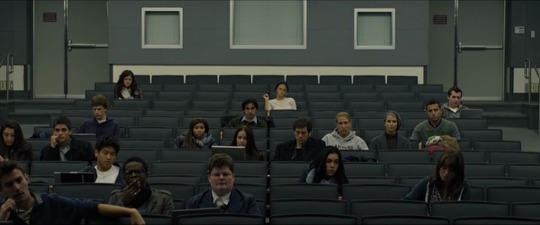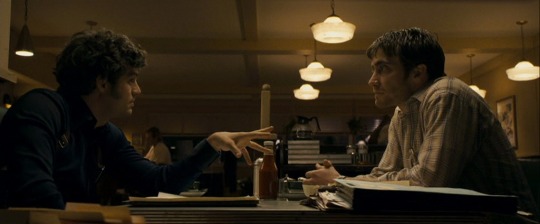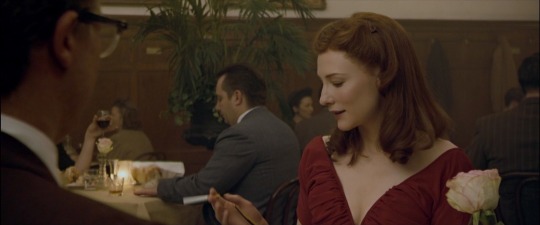#anon if you ment something more specific about visual style just send me another ask lmao
Note
what do you think the biggest similarities are in the styles of different david fincher films?
Thank you for the ask!! This is one of my favourite things to talk about in relation to Fincher, I think his style is so distinctive! These are some notes I have from a presentation I made in one of my classes a few months ago, they point out a lot of Fincher’s style in a kind of basic form but I think it’s a good outline and hopefully answers your question! (it not just lmk!)
Just want to say as well that Fincher’s style isn’t solely created by him, he works constantly with a lot of talented people who put in the work to create his style such as; Jeff Cronenweth (cinematographer for Fight Club, Gone Girl, The Social Network, The Girl with the Dragon Tattoo) Kirk Baxter (editor for Gone Girl, The Girl with the Dragon Tattoo, The Social Network, Mank, The Killer) Trish Summerville (costume designer for Gone Girl, Mank, The Girl with the Dragon Tattoo) AND I LITERALLY COULD GO ON AND ON!! but that aside…
Long post so i’m putting it under the cut :) (SPOILER WARNING FOR: The Game, Fight Club, Gone Girl, Se7en)
● Narration- Films like ‘Fight Club’ and ‘Gone Girl’ feature narration heavily throughout the films. This not only gives exposition about the events that are unfolding in the narrative, but also give the characters point of view on these events, and in some cases even being an unreliable narrator. For example, in Fight Club Edward Norton narrates throughout and gives information on Tyler and his jobs in the early scenes, this allows exposition to be given as well as Tyler's comedic replies to add comedy to the scene. Narration in Fight Club also allows the audience member to feel as though we are following the narrators inner monologue, which not only allows us to feel connected with him but also makes the twist that Tyler isn’t real, more shocking.
● Camera tracking movement - In Fincher's films, the camera follows the actors every movement, whether this being the camera following a characters eyeline, hand movement or just tracking their movement the camera follows. This is because Fincher wants the audience to feel completely connected to the character. There is a great video essay on youtube about this if anyone is interested https://youtu.be/GfqD5WqChUY?si=P2AMUHU4iLgtmlTX
● Opening credits - Fincher's opening credits have become an iconic staple in every one of his films so much so that he had to propose a separate budget for the CGI credits for Fight Club. From his elaborate CGI credits in Fight club and The Girl with the Dragon Tattoo, to more elaborate and ere credits like Se7en. Fincher does this to set the tone for his films and gives the audience a taste of what the films narrative will involve.


● Still camera- Throughout his films Fincher mainly uses a steady camera an only uses handheld when it is crucial to the narrative, for example The Social Network is shot completely on steady camera, but when Sean’s party gets busted by the police, a handheld camera follows Sean as he nervously walks out to of the bedroom to check what is happening. Which is the only handheld shot in the film. This lets the audience feel Seans intoxication and anxiety in this moment.
● Plot twists- Plot twists are another key typical component in many Fincher films, as he likes to subvert the audiences expectations such as in films like Se7en where it is revealed at the end that Tracy is John Doe’s final victim and the protagonist, David Mills, has become our final sin, wrath. These plot twists divert the audience as well as the main character who the audience follow, making the plot twists all the more shocking, with the full picture not becoming apparent to the main character nearing the end of the third act of the film, such as in The Game where it is revled at the end of the film that the torture Nicholous had been subjected to the whole film, was his birthday gift.
● Blue and yellow colour pallet- A defining trait of Fincher's work is is use of a blue and yellow color pallet that he adds to the scenes when colour grading. Using blue, created a muted and melancholy feeling to the scene, such as scenes in the narrator office in Fight Club, showing his boring and repetitive life. Yellow is often used to display night in Fincher's films, such as in the scene in the gospel church in The Curious Case of Benjamin Button, where the scene takes place at night and was naturally lit by the string lights above.


● Wide shots- Fincher also almost primarily used wide shots when shooting his scenes, he then intercuts these wide shots with his close ups insert shots which makes the audience notice these close up shots further and draws their attention to thee information being shown in these shots.
● Close ups when necessary- Fincher only uses close ups when he wants the audience to pay attention to an item or person as it is key to the plot and provides exposition. The fact that he uses close ups so sparingly means that the audience pick up of these key details. For example a close up of the Paper St soap company business card, in Fight Club, is shown when the narrator is at the payphone, showing an important character point and changes the plot of the film, you could argue.

● Non linear story lines- Almost all of Fincher's stories are non linier, meaning that they don't follow the typical narrative structure. For example, in Gone Girl, the story follows a linear structure of the day by day of Amy's disappearance until the mid point of the film when Amys narration kicks in and she reveals what happened to her.
● VFX shots- Fincher is know to be meticulous with his shots and therefore he prefers to use VFX shots in small ways to add details into the background or even the foreground so that he can tweak the film without worrying how it will look in post production. For example, he added blood to Daniel Craig's face in ‘The Girl with the Dragon Tattoo’ so that he could control how it looked when being washed away as well as there is no mistakes with continuity between shots. As well as adding historical buildings into the background of ‘Zodiac’ to recreate San Francisco in 1968.
● Production design- Fincher is meticulous with his production design, working closely with his production designer, Donald Graham Burt (who has worked on most of Fincher's filmography) and only shows an item or location when absolutely necessary, in a way that is meaningful to the narrative. As well as this use of costume design to represent a person emotions pr create a binary opposite. For example, in ‘The Curious Case of Benjamin Button’ Daisy wears a red dress in the scene where as she has dinner with Benjamin, as he sees her a in a romantic light for the first time as well as it draws the audience's attention to her, much like Benjamins attention is drawn to her.

Thank you for reading! Sorry for any spelling mistakes.
#long post#i could talk about this for days icl#these are notes from a presentation where i had to pick a director and make an argument that they are an auteur#(obviously i picked Fincher)#but i think these notes apply to this question#anon if you ment something more specific about visual style just send me another ask lmao#also PLEASE send me asks#i feel like i have so many fincher/soapshiping thoughts swimming around in my head still but i cant articulate them#david fincher
2 notes
·
View notes